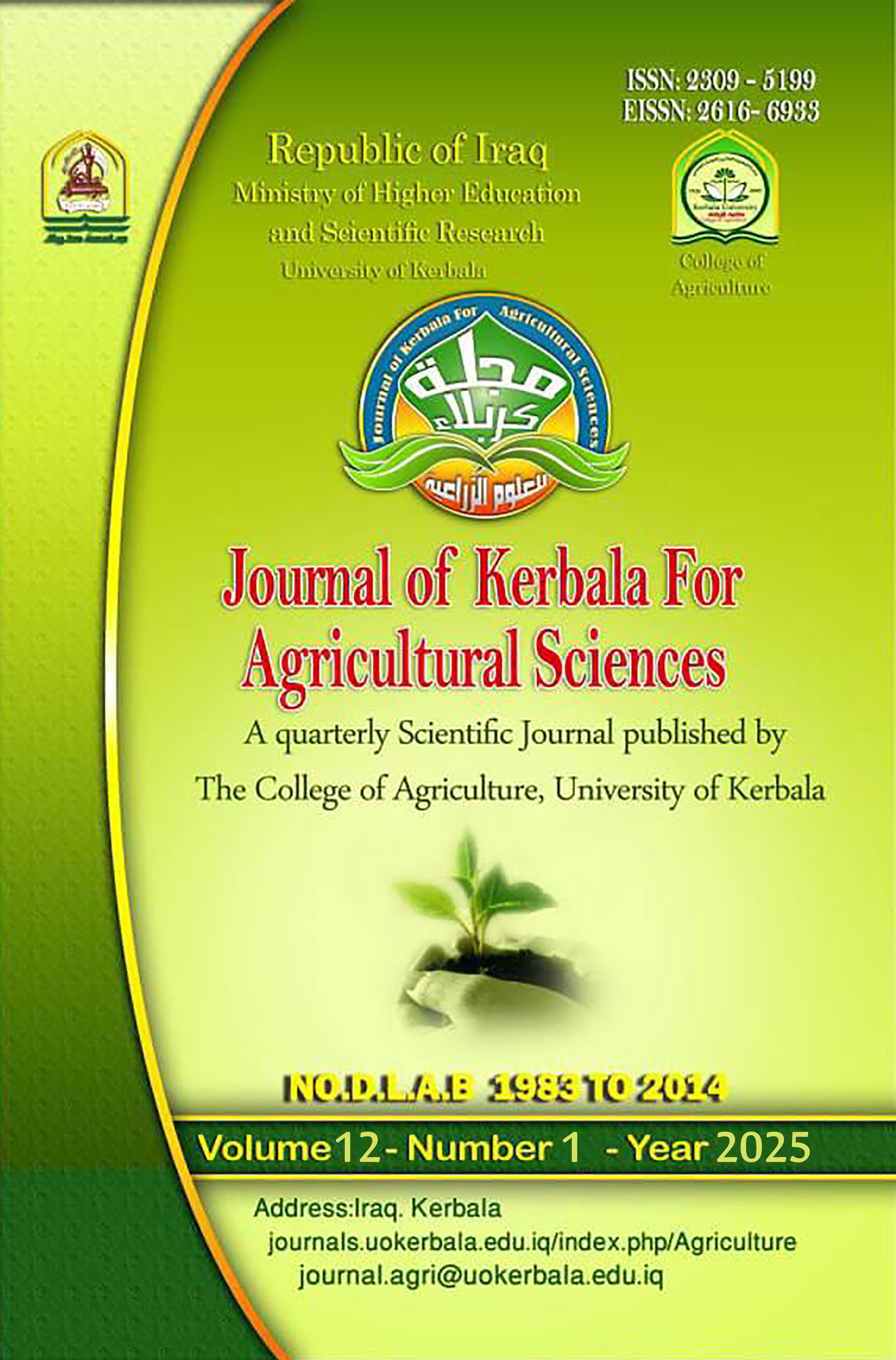Role of agricultural sulfur, Thiobacillus bacteria and nano-zinc in the availability of some microelements in the soil and some qualitative traits of maize
DOI:
https://doi.org/10.59658/jkas.v12i1.3239Keywords:
Maize, Agricultural sulfur, Thiobacillus bacteria, nano-zincAbstract
A field experiment was conducted in one of the fields of Ibn Al-Bitar Vocational Preparatory school in Al-Husseiniyah district in the Holy governorate of Kerbala for the spring season of 2022 according to a randomized complete block design with three replications (R.C.B.D). The experiment included three factors. The first included three levels of agricultural sulfur (0, 1500 and 3000 kg ha-1), symbolized by (S0, S1 and S2, respectively). The second factor included two levels of thiobacillus bacteria: the control treatment (no addition) and the treatment with bacteria, symbolized by (T0 and T1). The third factor included three concentrations of nano-zinc (0, 50 and 100 mg L-1), symbolized by (Zn0, Zn1 and Zn2, respectively). The results of the experiment showed that the addition of sulfur had a significant effect, as the level of 3000 kg ha-1 was superior in the concentration of iron and zinc in the soil, protein, carbohydrates and sulfur in the grains, with averages of (4.32 and 2.88 mg kg-1, 10.79 and 76.38 and 0.272% respectively). Also, the treatment with Thiobacillus bacteria showed superiority in the concentration of zinc in the soil and the concentration of protein and sulfur in the grains with averages of (2.55 mg kg-1, 10.25 and 0.248%). As for nano zinc, the third concentration (100 mg L-1) was superior in the concentration of protein, carbohydrates and sulfur in the grains with averages of (10.15, 74.00 and 0.239%). It was also observed that some interactions were significant in most of the traits studied.
Downloads
Published
How to Cite
Issue
Section
License
Copyright (c) 2025 Copyright (c) 2024 is the Author's article. Published by the Journal of Kerbala for Agricultural Sciences under a CC BY 4.0 license

This work is licensed under a Creative Commons Attribution 4.0 International License.
Licensing Terms
All articles are published under a Creative Commons License and will be directed to the Creative Commons Attribution 4.0 International License (CC BY 4.0) That permits use, distribution, and reproduction in any medium, provided the original work is properly cited. This license also allows the work to be used for commercial purposes.
Use by both non-commercial and commercial users
This content is licensed under a Creative Commons Attribution 4.0 International (CC BY 4.0) license, permitting use by both non-commercial and commercial users. Individual users may access, download, copy, display, and redistribute the articles to colleagues, as well as adapt, translate, and text- and data-mine the content, subject to the following conditions:
- The author's moral rights, including the right of attribution and the right to protect their work from derogatory treatment, are respected.
- Where content in the article is identified as belonging to a third party, users must ensure that any reuse complies with the copyright policies of the owner of that content.
- If the article content is reused for research or educational purposes, users should maintain a link to the appropriate bibliographic citation, including the DOI and a link to the published version on the journal's website.






